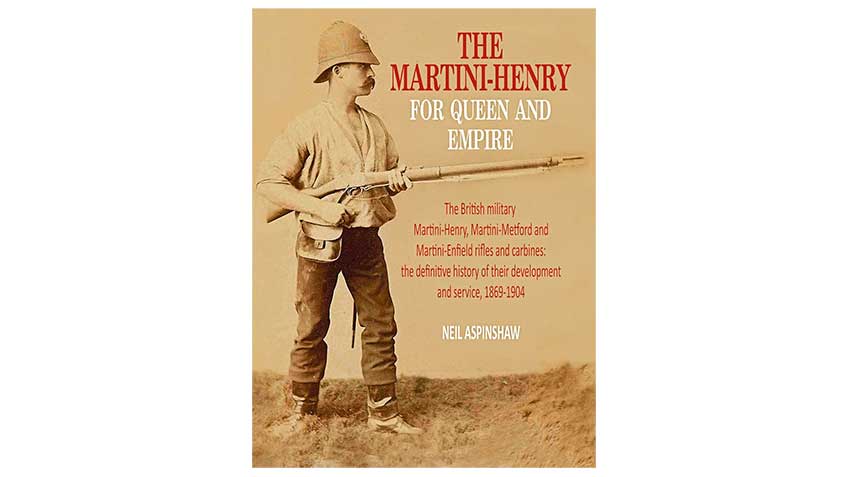
Laid out in a 256-pp. chronology of its development, the reader can follow why, and how, each upgrade was implemented. Interspersed with the sometimes-dry conversation about such things as screw thread dimensions are stirring stories recounting the desperate fighting by the Redcoats across the globe.
The author provides great insight into the organization and operations of the various manufacturing facilities that made, and serviced, these arms. He also details discussions among the men who were directly involved in improving the gun’s design. Included are definitive sections on the bayonets that were both adapted and developed, a “quick” identification guide to all of the subsets of the gun, and a guide to their markings—especially the brass buttstock discs.
Aspinshaw adroitly addresses the vexing issues of the Martinis jamming during various campaigns, as well as the problems encountered with its ammunition and their containers. He puts these problems into their proper historical context, and shows that they cannot be regarded as “scapegoats” for several British army disasters, such as at Isandhlwana and Abu Klea.
Not only is this book a delight for the serious student and collector, it is so well-written that it draws even the most casual reader into the saga of the Martini-Henry family of arms.
Price: $60 plus $7.84 domestic shipping. For more information, contact International Military Antiques at (908) 903-1200 or visit their website at ima-usa.com. Signed and deluxe editions of the book can be ordered from:[email protected].





































